Showing 49–60 of 250 results
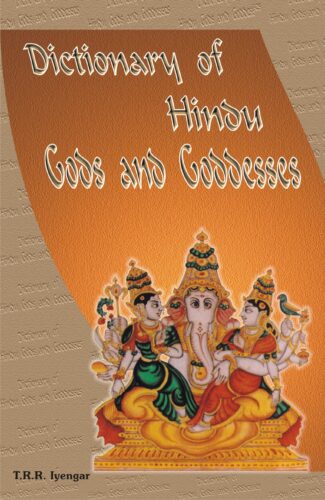
The book systematically studies various Hindu gods and goddesses based on Hindu sacred literature. It covers their earliest references and the evolution of their worship, their attributes and forms, and their signific-ance in the Hindu scheme of worship. It also includes references to many animate/inanimate sacred beings/things associated with the deities.
The Hindu pantheon of gods and goddesses has evolved over many millennia from a simple worship of elements and phenomena of nature to a complex system of myriad gods and goddesses of differing physical attributes, characteristic features and functions and each with different forms. The present Dictionary is an attempt to provide an in-depth yet comprehensive account of Hindu gods and goddesses referring to all the important religious sources. Based on Hindu sacred literature including the Vedas, epics and the Puranas, the book is a systematic study, in alphabetical order, of various Hindu gods and goddesses covering aspects such as the evolution of their worship and their earliest references in texts, stories of their birth and achievements, their attributes, their significance in the Hindu scheme of worship, their forms of representations, and their relationship with one another. It has references to not only personified beings but also other animate and inanimate sacred beings/things, seen in close association with the deities and worshipped by devotees, like Nandi, the bull, the snakes, the banyan and pipal trees, the saligramas and the banalingas. The adornments, vahanas, weapons and places associated with the deities are also elaborately discussed. The Dictionary will be an immensely useful reference work for scholars of ancient Indian mythology and religion as well as general readers willing to know more about Hindu gods and goddesses.

This dictionary provides meaning of Pali words in Sanskrit, Hindi and English. It will certainly prove useful to the learners of Pali language, students, scholars and researchers of Buddhist Studies, Pali Canons, and to those whose work is based on Pali.
As the teachings of the Buddha and the main Buddhist literature in original, as well as in translation, are contained mainly in Pali and Sanskrit languages, apart from Tibetan and Chinese as well, knowledge of Pali and Sanskrit is always essential to study the core of Buddhism — its basic teachings — and understand its basic concepts and perceptions. This voluminous edition has been offered in order to aid in the knowledge of the Pali and Sanskrit languages. Simple to comprehend and laying stress on clarity of meaning, the dictionary presents the Pali word at the beginning of each entry and gives its synonym in Sanskrit within bracket. It then proceeds to furnish the meaning of the word in both Hindi and English. The attempt is to make the dictionary useful to learners of the language and as a guide to those who are researching Buddhist works.
The book is meant to be a study companion to students and scholars of Buddhist Studies. It will be an indispensable aid to the readers and researchers of Pali Canons and works based on Pali and Sanskrit languages.

This newly-edited edition of D?ks??prak??a brought out jointly by DK Printworld and The Tantra Foundation, New Delhi is an authentic compilation based on some of the authoritative Tantras such as the ??rad?tilaka and the Tantras?ra of ?gamav?gi??a. The short and succinct work covers a wide range of ta?ntric topics such as rites associated with ta?ntric form of initiations, the qualities of guru and the disciple, activation of ta?ntric mantras by means of the esoteric rituals and worship of deities.
???????? ??? ?????????? ?? ???? ?? ?? ????????? ?? ?? ?????????? ??? ?????? ??????? ??? ?? ? ?? ??????? ??????? ????? ?? ?????? ???? ?? ?????? ??????? ?? ?????? ?? ???????? ?????? ?? ????????? ?? ???? ?? ????? ???? ?? ?????? ?? ????? ?????????? ?? ?? ????? ?? ?? ??? ? ????????? ??? ?????????-??????? ?? ???????? ?? ???? ?? ????? ???? ??? ??? ?? ?????? ?? ????? ?????? ??? ???? ???? ?? ?? ????? ???? ?? ? ???? ?????-???? ?????? ??????????? ??? ???? ?? ???? ??????? ?????? ?? ?????? ?? ???? ???????????? ???? ??? ? ??? ??????? ?? ??????? ?? ?? ??????? ????? ???????? ?? ??????? ?? ???? ?????? ?? ?????? ???????? ?? ??????? ?? ??????-?????, ?????????-?????, ?????????? ??? ?? ?????-??????? ????? ???? ??? ??????? ?? ?????? ????? ??????? ???? ??? ?? ??????? ?????? ?????? ?? ? ??? ??????-????????? ?? ????? ???? ??? ?????????? ???????? ??? ????????? ??? ????? ??? ???????????? ?? ??????????? ?? ?????? ?????? ???????????? ?? ?? ?? ?????????-???? ?? ????????? ?????? ???? ?? ??????? ?? ????????, ?? ????????? ?????? ????? ?????? ?? ? ???????????? ???? ?? ?????? ??? ?? ???????? (????????) ??? ???????? ?? ? ????? ?????? ??? ????-????? ?????, ???????????-?????, ??????-?????????, ?????? ?? ?????????? ?? ??????, ?????? ?? ?? ???? ?? ?????? ??? ????-??????? ?? ?????? ??? ???? ????????, ???????? ?? ?????????-??????, ??????? ????????? ?? ??????, ??????-????? ?? ???? ??? ?? ????? ??? ??????? ?????? ??? ?????? ?? ????, ????? ?????? ??? ???????? ?? ??????? ?? ????, ?????? ?????? ??? ???????? ???? ?? ????, ???? ?????? ??? ??????-??????, ????? ?????? ??? ????-??? ?? ?????? ??? ?????????? ???????? ?? ?????, ????? ?????? ??? ????? ???? ?? ?????? ?????? ?? ??????????? ?? ?????, ????? ?????? ??? ?????????????, ??????? ?? ?????????? ?? ???? ??? ??? ?????? ??? ?????? ??? ?? ???????????-???? ??? ?? ????? ??? ?? ?????? ?? ?? ?????? ???, ????? ?? ?????? ????????? ?? ?????????? ?? ??? ??? ?????? ?? ?
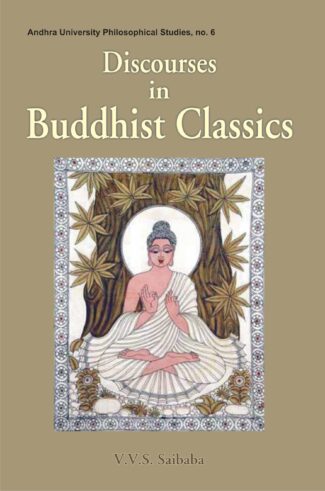
This work serves as a useful companion for the scholars and researchers who are seriously interested in the history of Buddhist literature; who wish to probe into Buddhist Textual Studies and who desire to have a lucid understanding of the philosophy of the two major Buddhist traditions of Theravada and Mahayana.
Discourses in Buddhist Classics is primarily designed with twofold objective viz., (a) to serve as the tool for post-graduate teaching of the Course in Philosophy of the Buddha; and (b) to sustain the interest of the enterprising student by providing comprehensive understanding of Theravada and Mahayana schools of Buddhism. Divided into six chapters, the first chapter gives an account of the missionary life and object of Buddha’s teachings from Pali and Sanskrit sources; the second surveys the evolution of Pali language and its significant contribution; the third and fourth provide a brief sketch of Pali Tripitakas, the salient features as well as the Philosophical doctrines of Theravada and Mahayana Buddhism by comparison and contrast. The last two chapters discuss the historiography of the two representative Buddhist Classics each from Thervada and Mahayana philosophical schools of Buddhism viz., Dhammapada, Sutta-Nipata, Vajracchedika Prajnaparamita and Saddharma Punóarika Sutra while throwing light on their central teachings. This work serves as a useful companion for the scholars and researchers who are seriously interested in the history of Buddhist literature; who wish to probe into Buddhist Textual Studies and who desire to have a lucid understanding of the philosophy of the two major Buddhist traditions of Theravada and Mahayana
DRISHTIPAAT, is a glimpse into the life and times of the three great saints of Ishvar Ashram, Nishat, Srinagar Kashmir. This book makes their presence felt all around us. The pictorial journey, takes the reader, in the serene and benign presence of the great Shaiva master Shree Lakshman Joo, Devi Sharika Ji and Devi Prabha Ji. Their drishti (glance), through the pictures, and shlokas make readers drench with the Divine Grace and their blessings.
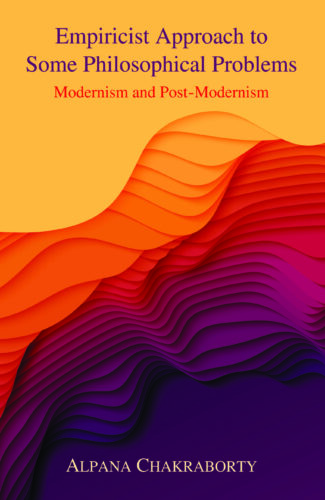
The book carefully examines and analyses the empirical tradition from different angles and concludes that modern and post-modern philosophy is actually a development from rationalism to empiricism, from the viewpoint of Francis Bacon, Thomas Hobbes, John Locke, George Berkeley, David Hume, John Stuart Mill, Edmund Husserl, Bertrand Russell and Ludwig Wittgenstein.
“This book is an attempt to give a historical account of the development of the empirical thoughts. It discusses issues related to the sources and the methods of knowing and highlights the views of the prominent empirical philosophers such as Thomas Hobbes and Francis Bacon up to Wittgenstein and the logical positivists. It takes up the issues related to the universals and inquires “Is there anything that is universal?” and if so, “Is universe knowable?”. The nominalist views of Thomas Hobbes and John Locke are taken up to establish the empiricist claim that “universals cannot exist without the particulars”. The important question “How do we determine the criteria of personal identity?” is taken up by John Locke and David Hume. Locke’s view that, “it is the same consciousness which constitutes personal identity”, but Hume rejects the idea of the permanent self. The criticisms for and against Locke and Hume are discussed herein in detail. The Berkeleian idealistic position that “only ideas of the mind are real” and the phenomenalistic position of Kant that “sense perception exists even when the object is not present in front of the perceivers eye” have both supportive and counter arguments which are discussed in detail. A critical analysis of Kantian theory of knowledge with the help of the two dogmas of empiricism has also been discussed.”
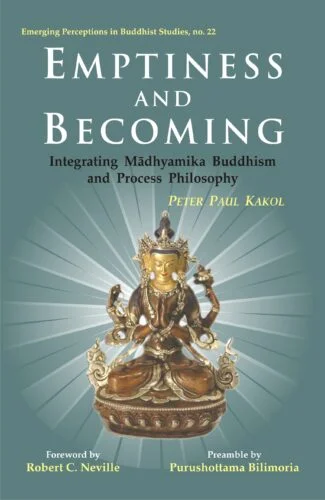
The book presents a detailed comparison of process philosophy and Màdhyamika Buddhism, analysing the similarities and differences between the two. It attempts a creative integration between the two and introduces a new philosophy, Process Buddhism.
The book presents a detailed comparison of process philosophy and Madhyamika Buddhism, analysing the similarities and differences between the two. It attempts a creative integration between the two and introduces a new philosophy, Process Buddhism. Process thought underscores the view that reality is a cumulative process of perspectival and experiential events. Peter Kakols work, in a remarkable foray into this area of philosophy, shows that the Madhyamika teaching, which essentially stresses the emptiness of emptiness, and process theory of worldviews are not incompatible with each other but are rather complementary aspects of the same theory.
In this meticulous work where the analysis involves careful exposition of both sides, Kakol notes that the fundamental compatibility between them is that both views become contradictory if seen as independent and so must be constantly transcended in a process of gradual purification and de-reification (or nominalisation). Kakol reveals an ability to situate process philosophy and Madhyamika Buddhism in the context of larger movements, both in their times of origin and now. He examines the views of not just Buddhist scholars and process philosophers but a range of social and political thought too.
The work will fascinate scholars and students of Process Philosophy and Madhyamika Buddhism.

With about 8,000 articles, this Encyclopaedia presents a panorama of Buddhist deities, demigods, godlings, demons the whole range of good and evil forces with the spotlight on the concretized, recognizable forms and their subtle symbolism.
Beginning with a few aniconic symbols, like foot prints, a throne, the Bo tree or stupas, in the prechristian Indian art, Buddhism came to evolve a variety of picturesque representations of a Self-Existent, Superimmanent Principle: in myriad forms and emanations that range from the superbly magnificent to sheerly grotesque. Endowed with diverse iconographic attributes, Buddhist deities/saints/demons have grown, over the rolling centuries, into bewildering numbers, legions. Which all, leave alone the neophytes, not even the best of scholars can recognize! The names of the divinities and their cultural/regional perceptions owing largely to the plurality of Buddhist pantheons, have only gone on to further complicate their identification. Unveiled, for the first time, in the pages of this Encyclopaedia, is a panorama of Buddhist deities, demigods, godlings, saints and demons, with spotlight on the concretized, recognizable forms and the subtle symbolism they involve. In its nearly 8000 alphabetically arranged articles of varying lengths, it mixes gods and demons, bhiksus and btsans, the aesthetic and the grotesque in fact, nearly the whole range of good and evil forces which the inspired among the adherents of the Buddhist faith conceived so ingeniously! Professor Bunce has painstakingly marshalled a wealth of data from authoritative language sources, notably, Sanskrit, Pali, Tibetan, Newari/Nepalese, Chinese, Mongolian, Japanese, Siamese/Thai, Annamese/Viet Namese, Javanese, and Sinhalese, in his effort to capture almost the entire framework of Buddhist divinities: a multi-pantheonic framework, together with its classes, groups and hierarchies, ranging from Adi-Buddha to Arhats and yet beyond. Himself a distinguished scholar of Oriental/Buddhist Art, Dr. Bunce incorporates, in scrupulous detail, the iconographic attributes of deities: like colours, heads/eyes, hands, objects held, body, feet, asanas, mudras, ornaments, vahanas, emanations, and whether calm or wrathful which, with a generous supplement of illustrations: about 300 elegant line-drawings and several colour plates, highlight the distinctiveness of each individual figure. Also included in the Encyclopaedia are users guide, glossaries (of asanas, mudras and attributes), identification charts, a hierarchic table, and bibliographic references. Growing from years of Professor Bunces persevered research and study, this compilation is certainly the first ever to draw together most of the Buddhist divinities/mythological characters, in their distinctly recognizable forms. And is, therefore, indispensable to both the specialists and non-specialists trying to identify each from a whole host of these figural representations.

It studies iconic representations of gods, godlings, demons, witches and tyrants of Hindu mythology, focussing on the concretized form of each pantheonic figure and exploring the iconic language of Hindu images.
Beginning with a few aniconic symbols, like foot prints, a throne, the Bo tree or stupas, in the prechristian Indian art, Buddhism came to evolve a variety of picturesque representations of a Self-Existent, Superimmanent Principle: in myriad forms and emanations that range from the superbly magnificent to sheerly grotesque. Endowed with diverse iconographic attributes, Buddhist deities/saints/demons have grown, over the rolling centuries, into bewildering numbers, legions. Which all, leave alone the neophytes, not even the best of scholars can recognize! The names of the divinities and their cultural/regional perceptions owing largely to the plurality of Buddhist pantheons, have only gone on to further complicate their identification. Unveiled, for the first time, in the pages of this Encyclopaedia, is a panorama of Buddhist deities, demigods, godlings, saints and demons, with spotlight on the concretized, recognizable forms and the subtle symbolism they involve. In its nearly 8000 alphabetically arranged articles of varying lengths, it mixes gods and demons, bhiksus and btsans, the aesthetic and the grotesque in fact, nearly the whole range of good and evil forces which the inspired among the adherents of the Buddhist faith conceived so ingeniously! Professor Bunce has painstakingly marshalled a wealth of data from authoritative language sources, notably, Sanskrit, Pali, Tibetan, Newari/Nepalese, Chinese, Mongolian, Japanese, Siamese/Thai, Annamese/Viet Namese, Javanese, and Sinhalese, in his effort to capture almost the entire framework of Buddhist divinities: a multi-pantheonic framework, together with its classes, groups and hierarchies, ranging from Adi-Buddha to Arhats and yet beyond. Himself a distinguished scholar of Oriental/Buddhist Art, Dr. Bunce incorporates, in scrupulous detail, the iconographic attributes of deities: like colours, heads/eyes, hands, objects held, body, feet, asanas, mudras, ornaments, vahanas, emanations, and whether calm or wrathful which, with a generous supplement of illustrations: about 300 elegant line-drawings and several colour plates, highlight the distinctiveness of each individual figure. Also included in the Encyclopaedia are users guide, glossaries (of asanas, mudras and attributes), identification charts, a hierarchic table, and bibliographic references. Growing from years of Professor Bunces persevered research and study, this compilation is certainly the first ever to draw together most of the Buddhist divinities/mythological characters, in their distinctly recognizable forms. And is, therefore, indispensable to both the specialists and non-specialists trying to identify each from a whole host of these figural representations.

This work on the essentials of Hinduism focuses on the anthropocosmic nature of the religion the cosmic law of nature and culture on which it is founded. It balances social reality and scriptural description with a dynamic analysis of the interacting elements to remove many popular misconceptions about Hinduism.
Many misconceptions circulate about Hinduism, mainly because scholars have relied exclusively on popular sources or political slogans of Hinduttva. The Eternal Hinduism, which is fundamentally a study of text and context, balances social reality and scriptural description with a dynamic analysis of the interacting elements. It cannot be understood on the basis of non-rational factor of one God, the Almighty. As an anthropocosmic religion, Hinduism has a great beauty. It can be understood by reading the cosmic law of nature and culture. This book sums up the essentials of Hinduism. It will be useful to a range of readers scholars of Hindu religious thought and philosophy as well as general readers interested in understanding the essential Hindu religious thinking and belief.

The present anthology is a collection of eleven articles on distinguished thinkers of contemporary India such as Krishna Chandra Bhattacharya, Sri Aurobindo, Binoy Kumar Sarkar, Manabendra Nath Roy, Balaram Hadi, Ramendrasundar Trivedi, Muhammad Iqbal, Debendranath Tagore, Keshub Chandra Sen, Sister Nivedita and Iswar Chandra Vidyasagar.
The present anthology is a collection of eleven articles on distinguished thinkers of contemporary India about values in general written by the members of the Value Group, Centre of Advanced Study in Philosophy, Jadavpur University. The eleven thinkers whose perspectives are elaborated in this volume are Krishna Chandra Bhattacharya, Sri Aurobindo, Binoy Kumar Sarkar, Manabendra Nath Roy, Balaram Hadi, Ramendrasundar Trivedi, Muhammad Iqbal, Debendranath Tagore, Keshub Chandra Sen, Sister Nivedita and Iswar Chandra Vidyasagar.
In this volume all the authors, in their own ways, are interested to look into the viewpoints of some of the renowned contemporary Indian thinkers to understand their perception of values and their suggested remedies for the elimination of social evils. Each author of this volume has endeavoured to interpret a thinker of his or her choice meticulously and essays are written in plain and simple English.
These profiles should attract the attention of a wide range of audience: from general readers to those of sociology, history and philosophy.
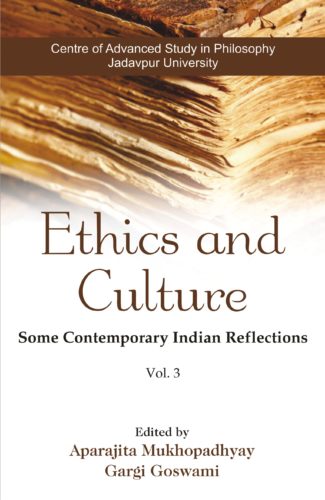
It explores the contributions of the great thinkers of modern India regarding the value system of our country. The perspectives of Bankim Chandra Chattopadhyay, Bal Gangadhar Tilak, Dwijendranath Tagore, Tarabai Shinde, J.N. Mohanty and Sri Ramakrishna Paramahamsa have been discussed in detail.
The present volume of Ethics and Culture contains six articles of renowned teachers of Philosophy who are also the members of the Value Group, Centre of Advanced Study in Philosophy, Jadavpur University. In all these articles authors have explored the contributions of the great thinkers of modern India regarding the value system of our country. Here the perspectives of Bankim Chandra Chattopadhyay, Bal Gangadhar Tilak, Dwijendranath Tagore, Tarabai Shinde, J.N. Mohanty and Sri Ramakrishna Paramahamsa have been discussed in detail as all of them have a distinct view and faith on the traditional cultural beliefs of India and also have taken a critical approach to judge the mundane, orthodox attitude of people.
The authors have explained the views of these great thinkers as their unique interpretations about Indian tradition can be used as a weapon against cultural encroachment and intolerance. The book, thus, helps to revive the true essence of our culture which is veiled by many socio-political factors of the present world.
| × |
|
Numbers 1 x ₹720.00 |
| × |
|
Mundaka Upanisad 1 x ₹126.00 |
| × |
|
An Intergrated Science of the Absolute (2 Vols. Set) 1 x ₹2,700.00 |
| × |
|
Vada in Theory and Practice 1 x ₹1,170.00 |
| × |
|
Ayodhya ka itihasa evam puratattva Rgveda kala se aba taka 1 x ₹990.00 |
| × |
|
Avenues to Beauty 1 x ₹522.00 |